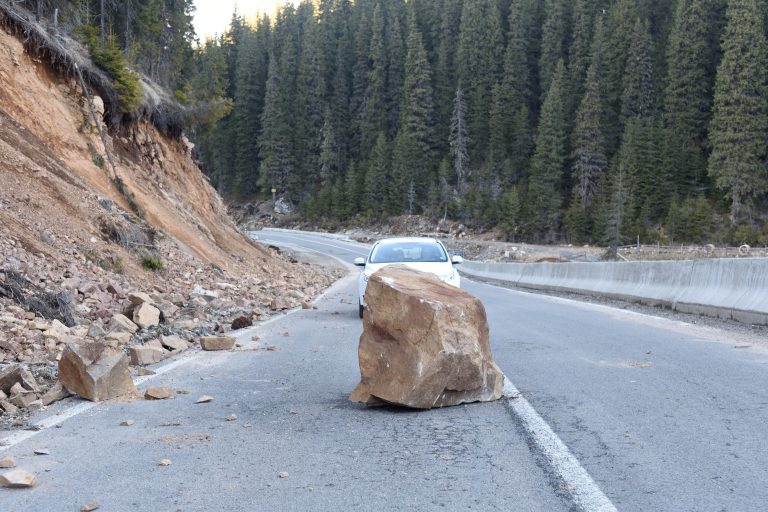Highlights
The low-down...
Car insurance can be complicated. There are different coverage types, endorsements, price comparisons, and all sorts of legal verbage in your contract that you may not understand. Today, we’re going to continue demystifying insurance for the layman, and focus on some optional coverage types. More specifically, what Comprehensive Insurance and Collision Insurance are, what they cost, and whether or not you even need them.
Unlike Liability Insurance, Comprehensive and Collision Insurance types are not state-mandated. This means that purchasing these coverage types is entirely up to you. However, that doesn’t mean they aren’t just as important as Liability, or considered a *luxury* coverage type. There are countless situations where Comprehensive or Collision would save your hide, and we’ll give a few examples to drive this point home.
Before we get started, it’s important to clarify one small note: the combination of Comprehensive, Collision, and Liability Insurance makes up the package deal commonly referred to as “Full Coverage”. Consumers often assume this means their vehicle is protected from damage under any circumstance, but this is not the case at all. Read on to find out what exactly you would be covered for.
How Comprehensive Coverage Protects You
The most basic definition of Comprehensive Insurance is that it covers your vehicle for anything other than a collision. That’s what most agents will tell you, but there are certain stipulations where you won’t be covered:
What Is Covered
- Striking an animal
- Natural disasters & “Acts of Nature”
- Fire
- Flood
- Vandalism
- Theft, including individual parts or the entire car
- Falling objects
- Glass Damage
What Is Not Covered
- Mechanical failure due to lack of maintenance
- Violating manufacturer guidelines, such as using alternative fuel
- Intoxicated driver operating your vehicle at time of incident
- Unlicensed driver operating your vehicle at time of incident
- Intentional loss (fraud)
- Terrorism and Acts of War
How Collision Coverage Protects You
Collision coverage protects you in most scenarios where your car collides with another vehicle or an object. It will cover the costs to repair your vehicle, but not the other party’s (which would be paid by your Liability Insurance). Like Comprehensive, there are stipulations for Collision. You won’t be covered for every collision, it must fall within one of the following categories:
What Is Covered
- Colliding with another vehicle
- Colliding with an object, like a light post or a mailbox
- Rolling your car, even if there was no actual collision
What Is Not Covered
- Third-party damages
- Medical expenses
- Intentional loss (fraud)
- Anything covered by Comprehensive Insurance
When You Should Buy Them
You Can’t Go Without Your Car
You Can Easily Afford the Coverage
This is somewhat a counterpoint to the previous reason. If you have no problems paying for C&C Insurance on your current income, get it. The extra money isn’t an issue for you, and the convenience of having your car covered for many more scenarios is worth the peace of mind. Not to mention, it’s generally a money-smart decision. Even if you can afford to completely replace your car on your own, does that mean you should? Probably not. Save your hard earned money.
You’re Renting or Leasing Your Car
For lenders and rental companies, you are a liability. That’s just the name of the game, because they have no idea what kind of driver you are. They are purely invested for profit and need a way to protect that investment if you slam their product into a tree. That’s where insurance comes in. It’s actually mandatory by most lenders for you to carry all coverage types (Liability + Collision + Comprehensive) if you’re driving a car that you haven’t fully paid for.
If you’re renting, most insurance policies offer an endorsement that transfers your coverage from your primary vehicle to the rental. If your car is in the shop and you have C&C Insurance with this endorsement, you’re good to rent a car without a second thought. If you have bare-minimum coverage, you should cough up the extra dough for C&C Insurance. Any damage to the rental car without coverage means you’ll be paying the bill. Ouch.
Your Car is a Classic
When You Shouldn't Have It
Your Car is of Low Value
Coverage Limits
For Standard Autos
Limits of Insurance work differently for C&C coverage than they do for Liability. For the cost of repairs, your car will be covered for however much is required, up to the limit where your insurer considers the car totaled. If the car is totaled, it will be replaced on an Actual Cash Value percentage. Actual Cash Value (ACV) is the estimated amount your car was determined to be worth right before your accident. The percentage of ACV paid to you can vary between carriers. In less desirable scenarios, 70% ACV is the starting point, up to 100% ACV for better options. Consider this percentage heavily if C&C Insurance is mandatory for your vehicle.
For Classic Cars
The method of payment is the same for classic automobiles as it is for standard autos. Your car is damaged, the insurance company pays for repairs. The primary difference lies in how your vehicle is valued. For a standard auto, Actual Cash Value is good enough. For classic cars, you and your insurer will value your car based on the Agreed Value (AV), which is a price-point that you both have agreed on in the event of a total loss. AV is determined right when you sign up, and will persist for the term of your contract.
How Much It Costs
Averages
Average costs for Comprehensive and Collision will vary depending on the state you live in. You can expect to pay more if you live in a state where natural disasters are abundant, or a hazard on the list of covered disasters is a frequent occurrence. Insureds in Kansas pay about three to four times as much for Comprehensive coverage alone as insureds living in Oregon. It’s all circumstantial, but you can expect to pay a few hundred more per year.
How Your Insurer Calculates Price
It is difficult to calculate an exact dollar amount you should be paying for before speaking with an agent. We’re all living in different areas, and location plays a big factor on price. Your insurer is primarily looking for:
- Driver age. Younger people are less experienced and more prone to risk. Cheaper rates come with age.
- Driver gender. Women are considered lower risk drivers, and thus have cheaper rates. Some states plan to remove this bias, but it’s still available for now.
- Driving history. The fewer points on your record, the better.
- Driver residence. As stated before, location plays a huge factor in price. If you live in an area with a high rate of theft or vandalism, your insurer will know and charge you accordingly.
- Model and year of car.
- Style of car. You’ll be paying more for a sports car than for a pickup truck.
- Credit score. An odd addition because this marker is typically considered for loans, but is a real contributing factor.
What You Can Do
Speak With an Agent
(909) 944-9022
Check out our Facebook page for future blog post alerts:
Frequently Asked Questions
Am I covered if I caused an accident?
If you have Collision Insurance, your vehicle damages will be covered if you caused an accident. The other party involved in the accident will likely contact your insurance carrier to be paid for their damages as well, and would be paid through your Liability Insurance.
How does coverage work if I was partially at-fault, or not at-fault in an accident?
If you were partially at-fault, your insurance carrier will perform an audit to deem how responsible you and the other party were for damages. This is called culpability. In this scenario, you will be paid for a percentage of your repairs through your Collision Insurance, equal to the amount of the other party’s culpability for the accident.
Are upgrades to my vehicle covered under Comprehensive and Collision Insurance?
This varies between carriers, but you can purchase additional coverage for upgrades up to a certain dollar amount. Make sure to inform your insurance agent any time you install an upgrade so that your policy can be updated to cover it.
Should I drop my Comprehensive and Collision coverage?
There is only one drawback to C&C Insurance, which is that it has additional cost. If your vehicle is of low value, often times the additional coverage would cost you more money than it’s worth in the long run. Check the Kelly Blue Book value of your vehicle, and compare it against the 10% rule mentioned above.


